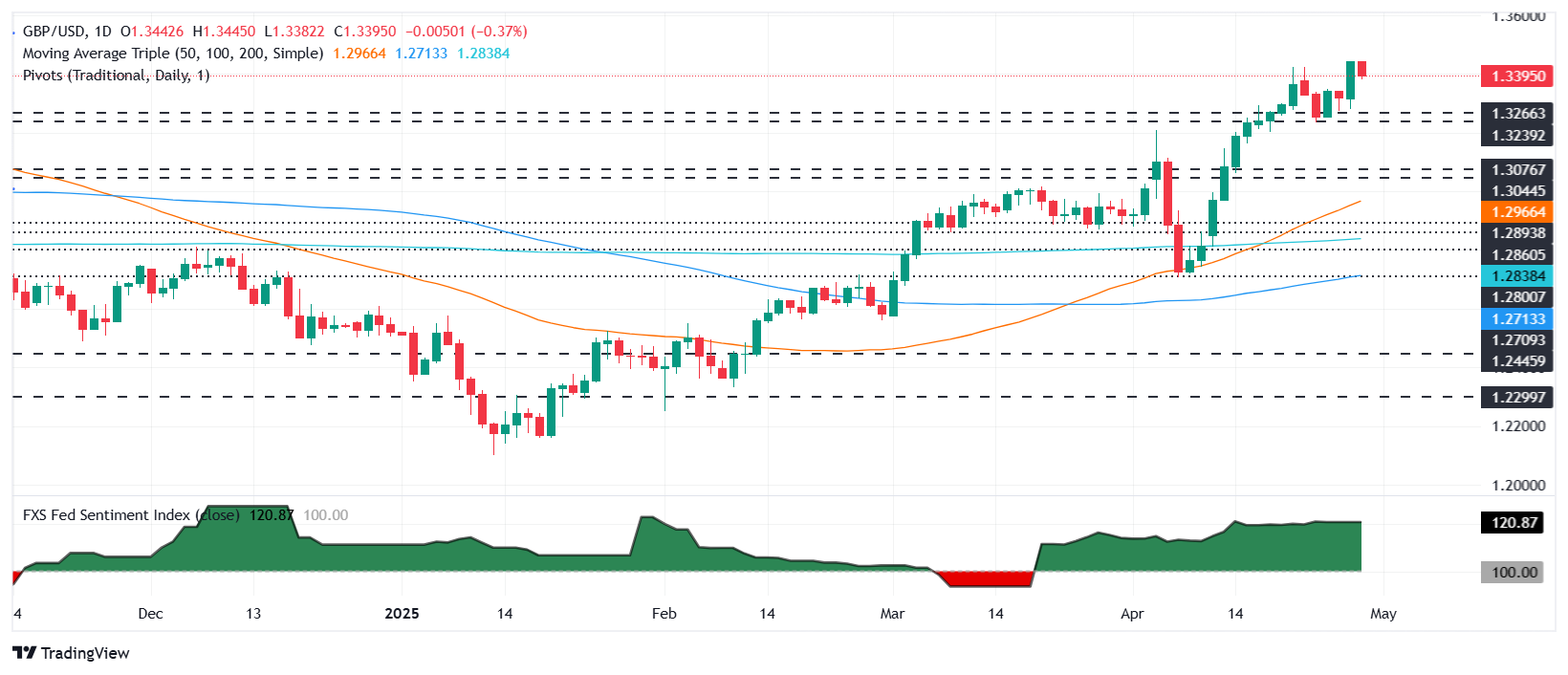-
Sterling slips 0.29% after losing momentum near year-to-date highs.
-
Disappointing US JOLTS and Consumer Confidence data heighten Fed rate cut expectations.
-
Market focus shifts to upcoming US Q1 GDP data, crucial for Fed policy direction.
The British Pound (GBP) weakened against the US Dollar (USD) after briefly testing its year-to-date high of 1.3443 but failing to sustain momentum above the 1.34 level. At the time of writing, GBP/USD trades at 1.3379, down 0.29%, extending losses as risk sentiment fades.
Weaker US Data Sparks Policy Speculation, Supports Dollar Demand
The pair’s decline follows disappointing U.S. economic releases that, while increasing speculation of potential Federal Reserve rate cuts, simultaneously boosted safe-haven demand for the Dollar. US Treasury yields dropped in response to the data, reflecting increased expectations for looser monetary policy.
March's Job Openings and Labor Turnover Survey (JOLTS) showed labor demand weakening, with openings falling from 7.48 million to 7.192 million—below the expected 7.5 million. Additionally, the Conference Board’s Consumer Confidence Index dropped sharply from 93.9 to 86.0 in April, missing the 87.5 forecast and marking the lowest reading in nearly five years.
Meanwhile, reports from Washington suggested that the Trump administration may consider reducing tariffs on the auto industry. However, persistent concerns surrounding the US-China trade conflict continue to weigh on market sentiment.
On the UK front, recent Retail Sales data indicated resilient household spending. However, disappointing PMI results revealed ongoing uncertainty among businesses, particularly regarding external trade developments.
Looking ahead, markets await the release of Q1 2025 US Gross Domestic Product (GDP) data, due Wednesday. Analysts expect modest growth of 0.4%, a figure that could further shape expectations for Fed policy moves.
GBP/USD Technical Forecast

GBP/USD continues to struggle to secure a foothold above the 1.34 level. After briefly breaking higher, the pair retreated to 1.3390. Failure to close the day above 1.34 could trigger a deeper pullback, with the 20-day Simple Moving Average (SMA) at 1.3303 serving as the next key support level. A sustained move below this point may expose the pair to further downside pressure.





